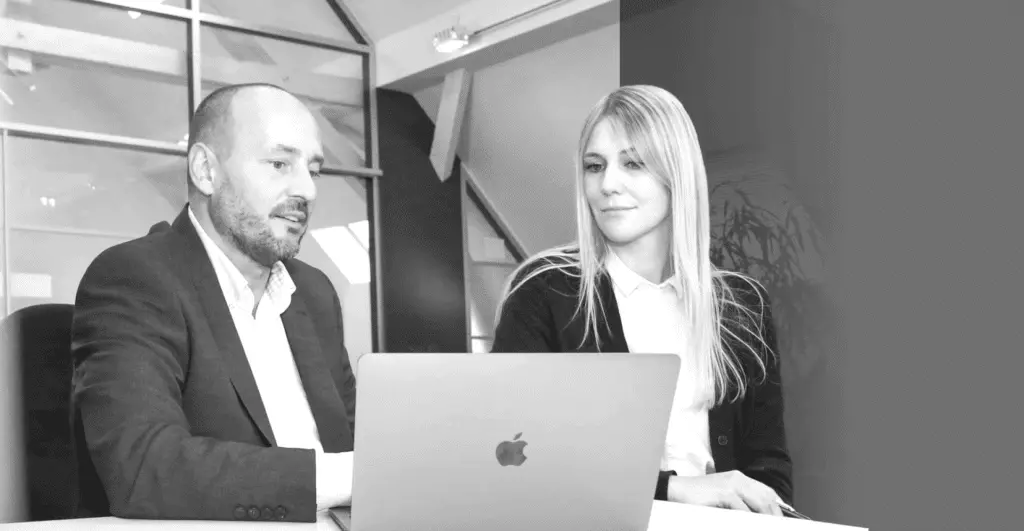We all know that counterfeiting and product piracy exists online, but many of the details remain shrouded in mystery. How many are out there? How to identify them, and separate them from the real deal? If you do identify a counterfeit online, what can you do about it? Well, who better to ask than the Head of EBRAND Germany, who handles counterfeiting threats against companies big and small every day.

Below, we’ve condensed some key takeaways from an interview with EBRAND Germany’s MD Alexander Wägner. The discussion takes insights from the front lines of Online Brand Protection, including real-life statistics and examples, and a close-up look at the inner workings of EBRAND technology. Without further ado, let’s get into it
Hi Alex. First of all, we should ask you, what kinds of businesses face online infringements?
Alexander Wägner: All business owners who make products with brand recognition must expect counterfeits of that product.
Which industries are particularly affected by product piracy?
Wägner: Product piracy affects industries far beyond high fashion and luxury items. Counterfeiters also replicate industrial products, for example, selling them on marketplaces with different color schemes. You might even find a product description that mentions the legitimate brand by name, but it is definitely a copy.
Recently, we discovered a counterfeiting campaign around heat pumps. A well-known manufacturer creates heat pumps with a green exterior, and a red interior. In China, marketplaces sell pumps that look identical, but boldly appear in yellow-green color schemes.
One of the boldest cases I have ever experienced was the counterfeiting of a complete car wash facility. The system was valued at 150,000 euros and was offered on a marketplace for 50,000 euros.
What other infringements do you encounter in your work?
Wägner: In many cases, we don’t initially know whether we’re seeing a fake or an original product. Companies in the clothing industry produce in China, where it is often more expensive to stop the machines at night than to simply let them run. The morning and evening shifts produce the original products – and at night, they just continue. Scammers secretly produce items under cover of darkness, then divert the goods and sell them online at cut-price rates.
The goods match the originals, technically speaking. However, they move outside of the manufacturer’s authorized distribution channels, and that’s a problem. Some products also mysteriously escape the reject piles, and end up online instead of destroyed as intended. In any case, price points offer the clearest sign of a scam or a counterfeit.

If you enter the name of a well-known puzzle and toy manufacturer as a search term on alibaba.com, offers of puzzle games with the brand name in the title appear. Many of these results cannot come from the company itself. Product pirates misuse the brand name of the brand owner to sell their own products. Recognizable brands rank better on search results and marketplaces, enriching counterfeiters at a brand’s expense.
Which platforms should a brand owner definitely keep an eye on? Are there any regional focuses on product piracy?
Wägner: East Asian markets take the crown for the percentage of IP violations. A brand owner should first monitor all marketplaces in China, which add up to around 200 platforms. Certain marketplaces stand out among the pack, including Alibaba and Ali Express. Indonesian markets also demand a brand protection professional’s attention. Counterfeiters latch on to the Indonesian ecommerce platform Tokopedia in droves.
Of course, brands also face problems on eBay and Amazon too.
How does a service provider distinguish between original and counterfeit?
Wägner: First of all, we need to learn which products the customer sells and where their biggest challenges lie. Our next steps involve defining an initial strategy together with the customer. This strategy also includes a detailed briefing. We ask questions about distinguishing features, and specific design traits that help us tell fakes apart from the real thing. Beyond that, which distribution channels are authorized by the manufacturer? Which offers can we ignore as a service provider? Ultimately, the most effective online brand monitoring solutions adjust continuously to meet the customer’s needs.
How can brand owners specifically protect themselves against product piracy?
Wägner: A company can, of course, take action against suspicious offers itself. All marketplaces have a so-called IP program. With this Intellectual Property Program, a company can register and ask the marketplace operator to delete any listings that contain product piracy. The problem: five minutes later, the same offer usually appears on another marketplace.
Alternatively, the company can hire a service provider who monitors the various channels on its behalf and deletes the abusive listings.
How easy is it for businesses to get suspicious listings deleted?
Wägner: There are differences between marketplaces, but in principle, it works. Alibaba and others delete relatively quickly. Every marketplace is interested in ensuring that no counterfeits are sold on its platform, to protect its own reputation. On average, the reported offers are taken down by the platform within 24 hours.
To help achieve the right results for brands across different platforms, we use a process called data clustering. While scam listings crop up across multiple platforms, they often feature a common data point that makes them easier to track. Often the same phone number or email address is used, so we can assign them to a specific provider. Of course, this goes beyond an individual platform’s capability, requiring cross-platform access and advanced data analytics to accomplish.
How can a brand owner legally take action against product pirates?
Wägner: Companies are well within their rights to take legal action, claim damages, and even or demand the closure of production facilities when they detect product piracy. If the customer wants to take legal action against a counterfeiter, we provide them with all the evidence collected on the respective platform. While the lawsuit itself is the customer’s responsibility, we support them throughout the whole process.

What technology do you use to track down counterfeits?
Wägner: For the search, we use special software, a crawler. We are connected to around 1,000 marketplaces worldwide. Each of these marketplaces provides an API that we tap into directly. The advantage of this is that the results are not filtered based on user criteria such as the location of the searcher. We basically approach the portal from behind and thereby receive all results without filters.
Depending on the keyword, we sometimes receive a huge number of results for a product. To deal with this, we employ data analysts who pre-select the detected infringements so that the customer only receives the relevant results. The customer receives a report from us, usually on a monthly basis, and they can also log into our software to see for themselves.
What does online brand protection through a service provider cost?
Wägner: Potential customers receive an initial, meaningful risk analysis for free. The smallest solution costs a manageable four-digit amount per year.
Conclusions: Tackling product piracy
In conclusion, brands with any degree of recognizability in their industry face increasing threats across online platforms and international markets. While in-house brand protection teams offer a degree of protection on individual platforms, cross-platform counterfeit scams require the comprehensive approach that Online Brand Protection delivers. To help protect your business from the threat of product piracy, you can learn more about Online Brand Protection, or reach out to the team for a free risk assessment.
